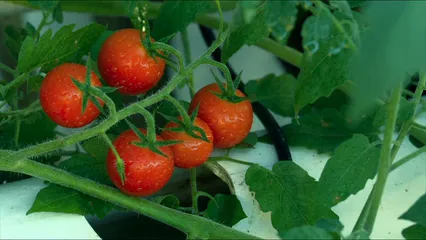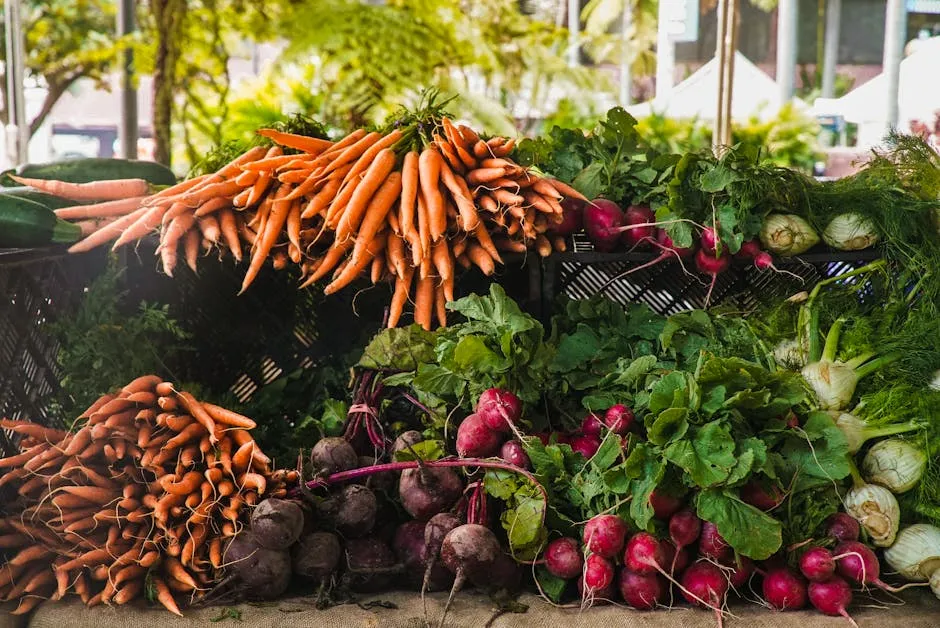

How to Successfully Grow Vegetables in Low Light Conditions
Introduction
Think your garden is doomed because it lacks sunlight? Well, think again! Many folks believe that vegetables are sun-hungry beasts that refuse to grow without a sunbathing session. Wrong! While some veggies do prefer sunbathing, many are perfectly content in lower light conditions. Yes, you heard that right! Some vegetables thrive in the cozy embrace of shade, making them ideal for those tricky spots in your garden.
Picture this: a lush garden brimming with leafy greens, vibrant herbs, and maybe even a few root vegetables, all happily growing in partial shade. It’s a gardener’s secret! You can cultivate a thriving vegetable patch, even beneath towering trees or in the shadow of your home. The trick lies in understanding which veggies have a penchant for shade and how to care for them properly.
So why should you embrace the shady side? For starters, shade can protect your plants from the relentless, scorching sun, especially in summer. It helps keep soil moisture stable, reducing the need for constant watering. Plus, it extends the growing season for cool-loving crops like leafy greens, which tend to bolt in extreme heat.

Speaking of keeping that soil moisture stable, a Soil Moisture Meter can be a gardener’s best friend. It tells you exactly when your plants are thirsty, ensuring you avoid overwatering or underwatering. Because let’s face it, nobody wants to drown their greens!
Now that we’ve debunked the myth of the sun-worshiping vegetable, let’s dive into the wonderful world of shade gardening. Get ready to explore the delightful possibilities of growing vegetables in low light conditions. Who knows? Your shady garden might just become the envy of your sun-soaked neighbors!
Summary of Key Points
Curious about growing vegetables in low-light conditions? Here’s a sneak peek into what we’ll cover:
- Many vegetables thrive in partial shade, including leafy greens and root crops.
- Different types of shade exist: dappled, partial, and deep shade, each with its own characteristics.
- Best practices for planting and caring for shade-loving vegetables can lead to a productive garden.
- Tips on maximizing light exposure in shadowy areas will help your plants flourish.
Now that you’re intrigued, let’s get into the nitty-gritty of understanding shade conditions!

Understanding Shade Conditions
Types of Shade
- Full Sun: This is the golden zone, where plants bask in six or more hours of direct sunlight daily. Vegetables like tomatoes, peppers, and squash thrive here, soaking up those sun rays like beachgoers on a sunny day.
- Partial Shade: When plants enjoy three to six hours of sunlight per day, they fall into this category. Many vegetables, especially leafy greens, can flourish in partial shade, making it a popular choice for urban gardens with limited light.
- Deep Shade: This is the dark side where sunlight barely penetrates, often found beneath dense tree canopies or in north-facing gardens. Not many vegetables will thrive here, but some herbs and certain leafy greens, like mint and chard, can still find a way to grow.
Understanding these shade types will help you choose the right vegetables for your garden. So, whether you’re dealing with dappled sunshine or deep shade, there’s a world of possibilities waiting for you!

Choosing the Right Vegetables
Growing vegetables in low light conditions may seem challenging, but fear not! A plethora of shade-loving veggies are ready to thrive in your garden’s shadiest spots. Let’s break down the best options for shady areas, ensuring your garden is bursting with flavor and color.
Best Vegetables for Shade
Leafy Greens
Leafy greens are the ultimate shade champions. Varieties like kale, spinach, and lettuce are not just photogenic; they also flourish with limited sunlight. These greens tend to bolt less in cooler temperatures, making them ideal candidates for your shaded garden.
Kale, with its robust leaves, can endure and even thrive in partial shade. Spinach is another leafy superstar that enjoys a chill, allowing you to harvest fresh salads even in the heat of summer. Lettuce, particularly loose-leaf types, are also happy to grow in dappled light, giving you crisp and crunchy salad greens without needing to soak up the sun. For those who want to take their leafy greens to the next level, consider a Seedling Starter Kit. It’s perfect for getting your greens off to a great start!

Root Vegetables
Next on our list are root vegetables. Carrots, beets, and radishes are well-suited for shaded patches. Carrots love cooler temperatures, and while they may take a bit longer to mature in low light, their sweet, crunchy goodness is worth the wait.
Beets, with their vibrant greens and edible roots, can thrive in partial shade, providing both beauty and nutrition. Radishes are quick-growing and perfect for shaded spots. They can be harvested in as little as three weeks, making them a delightful addition to your garden.

Brassicas
Brassicas, such as broccoli, cauliflower, and cabbage, are also fantastic for low-light conditions. These cool-weather crops enjoy the shade, allowing them to develop tightly-packed heads while avoiding the stress of intense heat.
Broccoli and cauliflower tend to have a slower growth rate in shade, but they reward your patience with bountiful harvests. Cabbage is another excellent choice, as it benefits from the coolness of shaded environments, resulting in sweeter, crisper heads.

Herbs
Let’s not forget the herbs! Parsley, cilantro, and mint thrive in shady areas, making them essential companions for your veggie garden. Parsley and cilantro are versatile herbs that enhance countless dishes, while mint adds a refreshing touch to beverages and desserts.
These herbs are not just culinary delights; they also attract beneficial insects to your garden. Plus, growing mint in containers can help keep its vigorous growth in check, preventing it from overtaking your garden beds. To keep your hands clean while gardening, don’t forget to grab a pair of Gardening Gloves with Fingertips. They help you dig deep without getting your hands dirty!

Examples of Successful Shade Gardens
Now, let’s sprinkle in some inspiration! Gardeners around the globe have successfully turned their shaded spaces into productive patches. Take Shawna Coronado, who transformed her traditional yard into a vibrant potager garden filled with leafy greens and herbs, even donating excess produce to local food pantries. Her success story is a testament to the potential of shade gardening.
Another inspiring tale comes from a group of urban gardeners who grew a wide variety of vegetables in their community garden, focusing on crops that thrive in low light. Their commitment to sharing knowledge and produce not only nourished their community but also demonstrated that even the shadiest spots can yield delicious results.
So, whether you’re in a bustling city or a quiet suburb, remember that your shaded garden can flourish with the right vegetable choices. Embrace the shade, and let your garden shine!

Best Practices for Growing in Low Light
Watering and Maintenance
When it comes to watering in shaded gardens, timing is everything. Plants in low light often require less water than their sun-loving counterparts. The soil retains moisture longer, thanks to the reduced evaporation rates. Adjust your watering schedule accordingly. Monitor the moisture levels closely; if the top inch of soil feels dry, it’s time to hydrate those lovely greens!
Also, be on the lookout for pesky pests. Shaded gardens can become a haven for slugs and snails. These slimy critters thrive in dampness. To tackle them, consider using crushed eggshells or diatomaceous earth around your plants. They’ll think twice about munching on your greens when faced with a prickly barrier! If you want to take a more proactive approach, an Organic Pest Control Spray can help keep those unwanted guests at bay.

Utilizing Reflective Surfaces
Want to bring a bit of sunshine to your shaded garden? Mirrors and light-colored walls can be your best friends! They reflect light and brighten up those dark corners. Position mirrors strategically to bounce light onto your plants. A white wall can transform a gloomy spot into a vibrant growing area.
Additionally, using pale-colored mulches around your plants can help reflect light back onto them. Think of it as giving your veggies a little sunbathing session, even when they’re hiding in the shade. Speaking of mulch, consider using Eco-Friendly Mulch Mats to help with moisture retention and weed control!
Common Mistakes to Avoid
Growing vegetables in low-light conditions can be a rewarding challenge. However, some common blunders can turn your garden dreams into a leafy nightmare. Let’s shine a light on those mistakes and help you nurture a thriving shade garden.
Planting Sun-Loving Varieties in Full Shade
One of the top mistakes gardeners make is planting sun-loving vegetables in full shade. It’s like inviting a sunbather to a snowstorm! Vegetables like tomatoes, peppers, and cucumbers crave the sun. When they don’t get enough, they sulk, refuse to grow, and may even throw a tantrum. Instead, stick to shade-tolerant varieties such as leafy greens, root vegetables, and certain herbs. Your garden will thank you, and so will your taste buds!

Overwatering Due to Higher Moisture Retention
Another common pitfall is overwatering. Shaded areas retain moisture longer, which can lead to soggy soil and root rot. While it’s tempting to keep watering those poor plants, less is often more! Check the soil with your finger; if the top inch is damp, hold off on that watering can. Remember, nobody likes being waterlogged, especially your veggies.
Neglecting Nutrient Needs of Shade-Tolerant Plants
Lastly, many gardeners forget that shade-loving plants still need nutrients. Just because they aren’t basking in the sun doesn’t mean they don’t have demands! Shade-tolerant vegetables often grow slower, which means their nutrient needs can vary. Regularly amend the soil with organic matter and fertilizers specifically designed for shaded gardens. This ensures your plants get the food they need to thrive and produce a bountiful harvest. For more on improving soil health, check out this composting basics for improving soil health. And hey, if you want to give your plants a nutrient boost, consider using Organic Fertilizer for Vegetables.

Avoiding these common mistakes is essential for success in growing vegetables in low-light conditions. By choosing the right plants, monitoring your watering habits, and ensuring they get adequate nutrients, you’ll be well on your way to creating a lush and productive shade garden. Remember, gardening is all about learning and adapting, so don’t be discouraged if it takes a bit of practice!
Conclusion
Growing vegetables in shaded areas isn’t just a dream; it’s a reality waiting for you to embrace! With the right knowledge and practices, you can enjoy a flourishing garden, even when the sun plays hide-and-seek. Remember that many vegetables thrive in partial shade, offering a range of delicious options for your table.
Experiment with your shaded spaces and discover the hidden gems that can flourish there. Leafy greens, root vegetables, and herbs are just a few of the delightful crops that can thrive in less-than-ideal lighting conditions. So, grab your gardening gloves and get started!
And if you’re looking to add some fun to your garden, a Garden Gnome Decor could add a whimsical touch to your shady retreat!
Don’t forget to share your successes and tips with fellow gardeners. You never know who you might inspire! Happy gardening, and may your shaded patches yield a bountiful harvest!

FAQs
What vegetables grow best in complete shade?
If your garden is trapped in a shadowy realm, fear not! Some vegetables thrive in complete shade. These include leafy greens and herbs. Think of delightful options like parsley, mint, and chervil. Spinach and Swiss chard also tolerate low light. While they may not reach their full potential, these veggies can still provide a harvest. Just remember, if your garden resembles a cave, you might want to stick with these shade-loving champs!
Can I use grow lights for vegetables in low-light conditions?
Absolutely! If the sunlight is playing hard to get, grow lights can be your best friend. These artificial sun substitutes help provide the necessary light for your plants to thrive. Position them about 12 to 24 inches above your plants. Adjust the height as they grow taller. Make sure to choose full-spectrum LED lights, as they mimic natural sunlight. With a little help from technology, you’ll have a flourishing garden despite the dim conditions! Consider using a LED Grow Light for Indoor Plants to boost your garden’s growth.
How can I tell if my plants are getting enough light?
Light levels can be as tricky to gauge as a cat’s mood. However, there are some telltale signs! If your plants are stretching toward the light or looking spindly, they may be light-starved. Yellowing leaves? That’s a sign, too. Alternatively, if your leafy greens are wilting in the shade, it might be time to reassess their light situation. Remember to monitor them regularly. Your plants will thank you for the attention!
What are the best practices for soil health in shaded gardens?
Healthy soil is the foundation of a successful garden, especially in shady spots. Start by enriching your soil with organic matter. Compost adds nutrients and improves drainage. Regular mulching helps retain moisture and regulate temperature. If you notice competition from tree roots, consider using raised beds. These will elevate your plants and provide better drainage. Finally, test your soil regularly to ensure it’s in top shape. A little TLC goes a long way in creating a thriving shaded garden!
Do vegetables in shade take longer to mature?
Yes, indeed! Vegetables growing in shaded conditions often take their sweet time. This is because they receive less light, which slows down their growth rates. Leafy greens like spinach and lettuce might be particularly affected. However, the wait is worth it! These veggies may develop richer flavors in cooler, shaded environments. Patience is key. Just think of it as a slow-cooked meal—good things come to those who wait!
How can I manage pests in a shaded garden?
Ah, pests—the uninvited guests of the garden. In shaded areas, slugs and snails can be particularly troublesome. To manage these pesky invaders, create barriers using crushed eggshells or diatomaceous earth around your plants. These natural deterrents work wonders. You can also set up beer traps to lure them away. Additionally, keep your garden tidy. Remove any debris where pests could hide. By staying vigilant, you can keep your shaded haven flourishing and pest-free!
Please let us know what you think about our content by leaving a comment down below!
Thank you for reading till here 🙂
All images from Pexels



